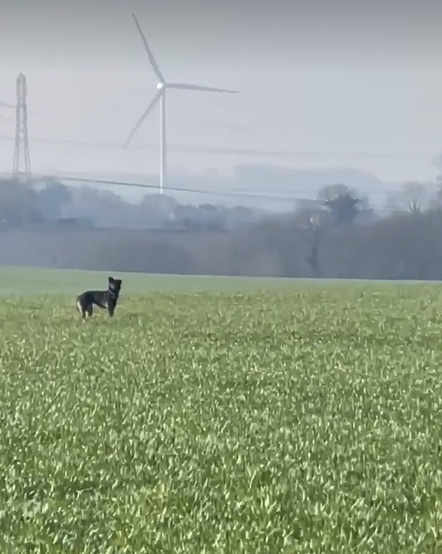Dogs in Flight Mode (Also Known as Survival Mode): What It Is and How to Help
When a dog goes missing and days pass without a single sighting, the worry can feel overwhelming.
You might wonder: Why hasn’t anyone seen them? Why won’t they come when called? How can a beloved dog vanish into thin air?
The answer often lies in something called flight mode—also known as survival mode—a powerful, involuntary response that helps dogs survive perceived danger.
Understanding this state is essential if you want to bring a lost dog home safely.
🧠 What Is Flight Mode (aka Survival Mode)?
Flight mode, sometimes referred to as survival mode, is not disobedience. It’s not poor training. It’s not that your dog doesn’t love you.
It’s a neurobiological reaction to stress and fear, deeply wired into a dog’s nervous system. When a dog experiences something frightening—like fireworks, an accident, being rehomed, or even just getting lost—they may go into a state of extreme survival instinct.
In this state, their body and brain prepare for one thing only: escape. They’re not “choosing” to run—they physically and mentally can’t do anything else.
⚡ What Happens Inside the Dog’s Brain?
When fear kicks in, the amygdala (the brain’s fear centre) takes over. Within seconds:
- Adrenaline surges, pushing blood to the muscles and speeding up breathing and heart rate.
- Cortisol floods the system, keeping them in a hyper-alert state.
- The part of the brain that handles logic, memory, and recognition gets suppressed.
This means:
- Your dog might not recognise your voice or even your face.
- They likely won’t respond to their name, whistles, or familiar commands.
- Instead of running to safety, they run from everything—even you.
Even confident, well-trained dogs can enter flight/survival mode under stress. It’s instinct, not choice.
👀 Why Don’t We See Them?
This is one of the hardest things for families to understand. Dogs in flight mode become stealthy survivors. You might search for days and never catch a glimpse—even if the dog is just a few fields away.
Dogs in this state are:
- Silent – They don’t bark or draw attention.
- Nocturnal – They tend to move after dark, when the world is quiet.
- Well-hidden – They bed down in hedgerows, barns, gardens, or other sheltered places.
- Hyper-aware – Any sound or movement sends them running again.
Many remain within a small radius of where they were lost—but they’re in hiding, not gone.
🚫 What Not to Do
As humans, our first instinct is to call out, search the area, or try to chase a dog we’ve spotted. But for a dog in flight (or survival) mode, those actions feel like pressure or even threat.
Avoid:
- ❌ Shouting or calling (can sound like anger to a frightened dog)
- ❌ Chasing or approaching directly (triggers escape reflex)
- ❌ Bringing crowds of people to help search
These can make the dog flee farther or into dangerous areas.
✅ What You Should Do
If you believe a dog is in flight/survival mode, take a calm and strategic approach:
- Stop active searching unless advised – Reduce human activity in the area.
- Create a scent base – Leave unwashed clothing or bedding where the dog was last seen.
- Set up a quiet feeding station – Offer food and water in a low-traffic spot.
- Use trail cameras – These help track the dog’s movements without human interference.
- Log all sightings immediately – Include time, location, direction of travel, and behaviour.
- Stay consistent – Changing tactics too often can disrupt progress. Patience is key.
⏳ How Long Can It Last?
Some dogs calm down within hours. Others, especially rescues or dogs with trauma histories, can remain in flight/survival mode for days or even weeks.
Over time, most dogs begin to relax when:
- They’re no longer being pursued
- A consistent food source appears
- They feel safe and undisturbed
- Familiar scents start to reappear
That’s when recovery becomes possible—through either a slow reintroduction or a humane trap.
💬 We’re Here to Help
At K9-RSQ, we specialise in recovering dogs who are in survival mode. Our approach is rooted in behavioural science, not guesswork. If your dog is missing and you’re not sure what to do next, don’t panic. Reach out.
We can guide you through the process calmly and carefully—because when it comes to survival mode, panic prolongs. But patience? Patience brings them home.
🐾

